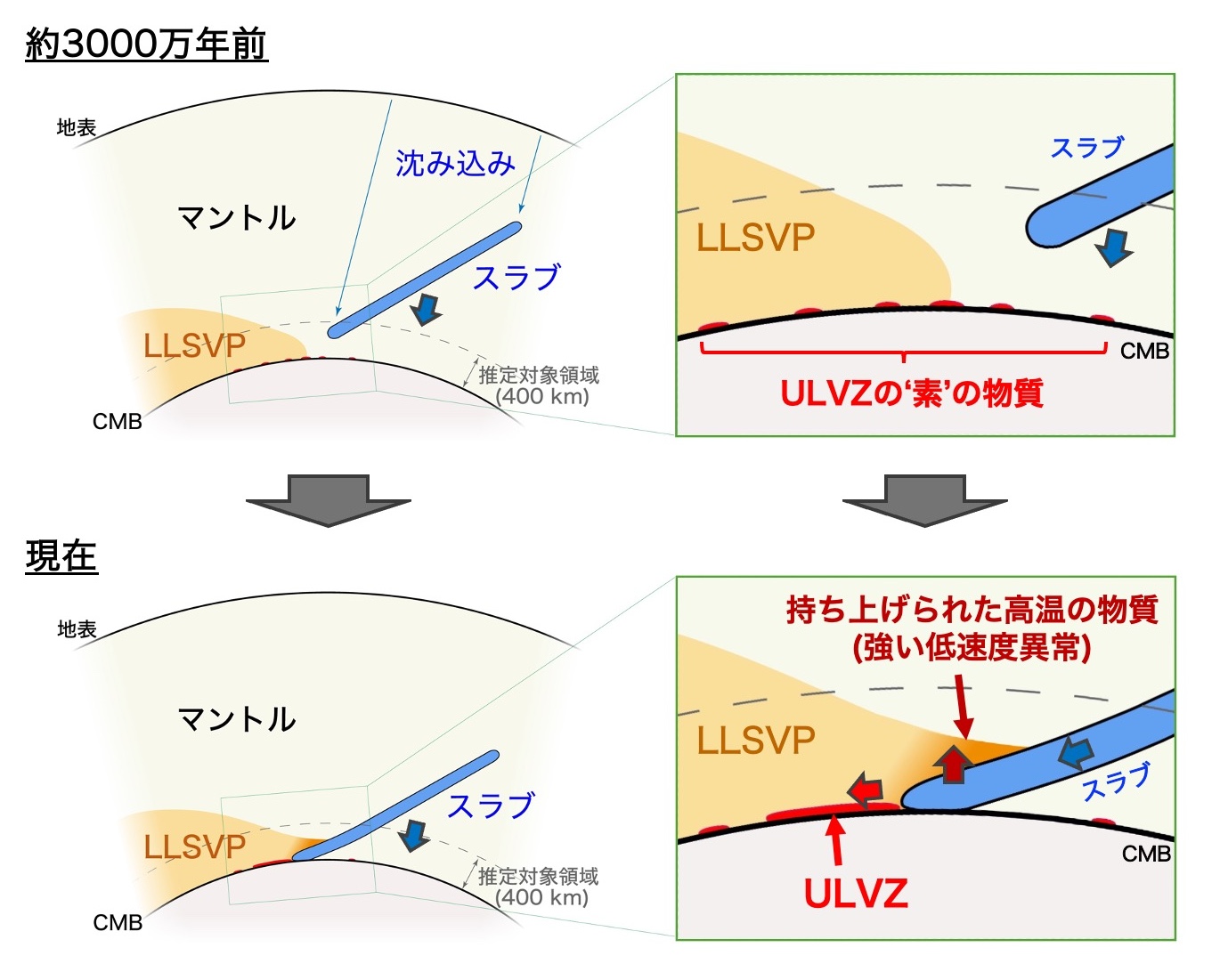Disclaimer: machine translated by DeepL which may contain errors.
The Rigakubu News
The Rigakubu News, July 2025.
Research Student Communicates to Faculty >
Seafloor Landscapes Shaped by Oceanic Plates at the Base of the Mantle
Kenji Kawai (Associate Professor, Department of Earth and Planetary Science)
Keisuke Ohtsuru (Third-year Doctoral student, Department of Earth and Planetary Science)
On the earth's surface, the movement of plates forms landforms such as mountain ranges and reconfigures the arrangement of continents.
On the other hand, horizontal heterogeneities corresponding to "continents" and "landforms" are also known to exist at the bottom of the mantle.
What forms and moves them?
By imaging the structure of the lowermost mantle beneath the North Pacific Ocean using a large amount of seismic waveform data,
we have found that "slabs," which are oceanic plates subducted from the surface,
play a major role in the movement of material at the bottom of the mantle.
![]()
Cold, heavy slabs subducted in oceanic trenches descend to the core-mantle boundary at a depth of 2,900 km. The more than 80,000 S-wave waveform records analyzed in this study show that the tip of the slab slides southwestward across the mantle floor beneath the Pacific Ocean, pushing up the northern margin of the Large Low-Speed Velocity Zone (LLSVP) from below.
Understanding the dynamics of the lowermost mantle is essential to unraveling the evolution of the Earth. This is not only the site of heat and mass exchange with the core below, but also the terminus of downwelling in the mantle and the source of new plumes. The structure of the mantle interior is estimated as a three-dimensional "map" based on data from seismic waves propagating through the Earth's interior, showing the speed at which seismic waves travel through each point. However, it has long been a mystery how the LLSVP, which corresponds to a "continent" on a horizontal scale of several thousand km, and the Ultra-Low Velocity Zone (ULVZ) on a horizontal scale of several hundred km, which have been confirmed to exist in previous studies, are formed.
In this study, we collected more than 80,000 seismic waveform data observed in Japan and the U.S., and developed a three-dimensional waveform inversion method (originally developed by our university) that allows us to use the observed waveforms themselves as data. This method numerically solves the equations of motion of discretized elastic bodies to calculate theoretical waveforms, and then estimates seismic wave velocities by updating the velocity structure so that the residual difference between the observed and theoretical waveforms becomes small.
As a result, a sheet-like high-velocity anomaly with a thickness of 200 km was drawn with a resolution of 50 km. This is interpreted to correspond to an ancient slab subducted in the Mendocino Trench that does not exist but existed about 200 million years ago. On the upper side of the high-velocity sheet, a strong low-velocity zone with a 3% decrease in S-wave velocity appeared at the margin of the LLSVP, and furthermore, a ULVZ with an estimated thickness of several tens of kilometers and a velocity decrease of more than 10% was concentrated at its tip. Combined with convection simulation studies, this suggests that the slab plays the role of a "broom" that scrubs the bottom surface and sweeps up scattered ULVZ material, while simultaneously pushing up hot material at the core-mantle boundary.
The LLSVP is considered to be a region that differs from its surroundings in both temperature and composition, and influences the heat flow from the core and the chemical evolution of the mantle. However, how the boundary is maintained and why the ULVZ gathers at the periphery is unresolved. This study presents a dynamic scenario in which slab inflow causes ULVZs to accumulate near the LLSVP boundary, shedding light on the link between plate motions at the surface and convection at the base of the mantle. The "bottom currents" brought about by oceanic plates subducting from the oceanic rift also change the "topography" of the deepest part of the mantle.
 A slab subducted about 200 million years ago in the Pacific Ocean has reached the bottom of the mantle, pushing up the edge of the LLSVP and sweeping up ULVZ material
A slab subducted about 200 million years ago in the Pacific Ocean has reached the bottom of the mantle, pushing up the edge of the LLSVP and sweeping up ULVZ materialThis study was published in K. Otsuru et al. Journal of Geophysical Research: Solid Earth, 130, e2024JB030654 (2025).


